Francis Bacon at the National Portrait Gallery is an emotional tour de force
‘Francis Bacon: Human Presence’ at the National Portrait Gallery in London puts the spotlight on Bacon's portraiture
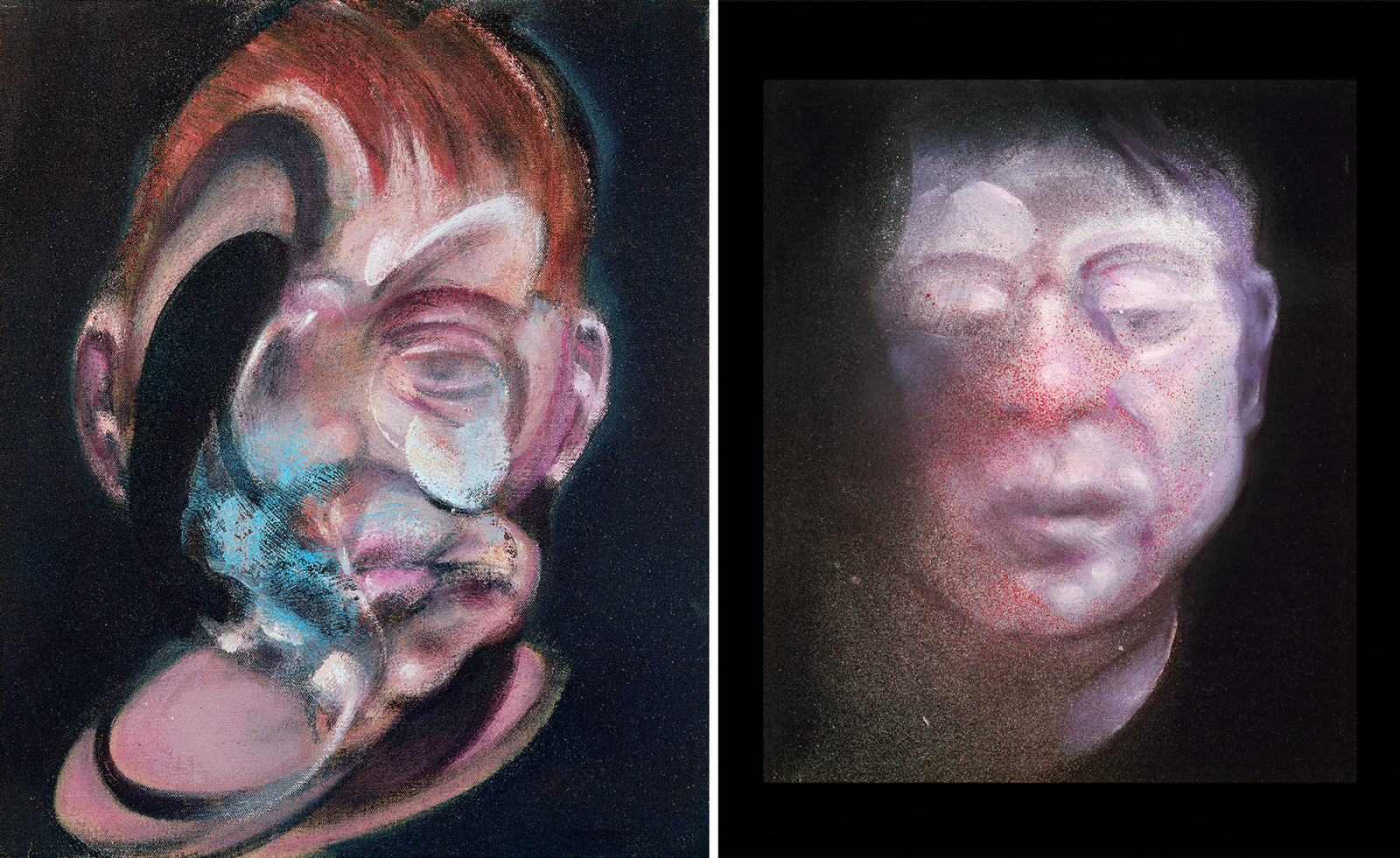
Francis Bacon’s distorted forms, caught in hellish moments, are etched into the brain of those with only a passing interest in the art canon, an eerie familiarity that still doesn’t prepare you for the sheer emotionality of his major retrospective at the National Portrait Gallery.
Taking you from Bacon’s early portraits in the 1940s, through self-portraits and portraits of friends in the 1950s, to the personal relationships that defined his work in the 1960s, the exhibition documents Bacon’s relationship with representation in his dismantling of both traditional power structures and tortured memorialisations of departed lovers.
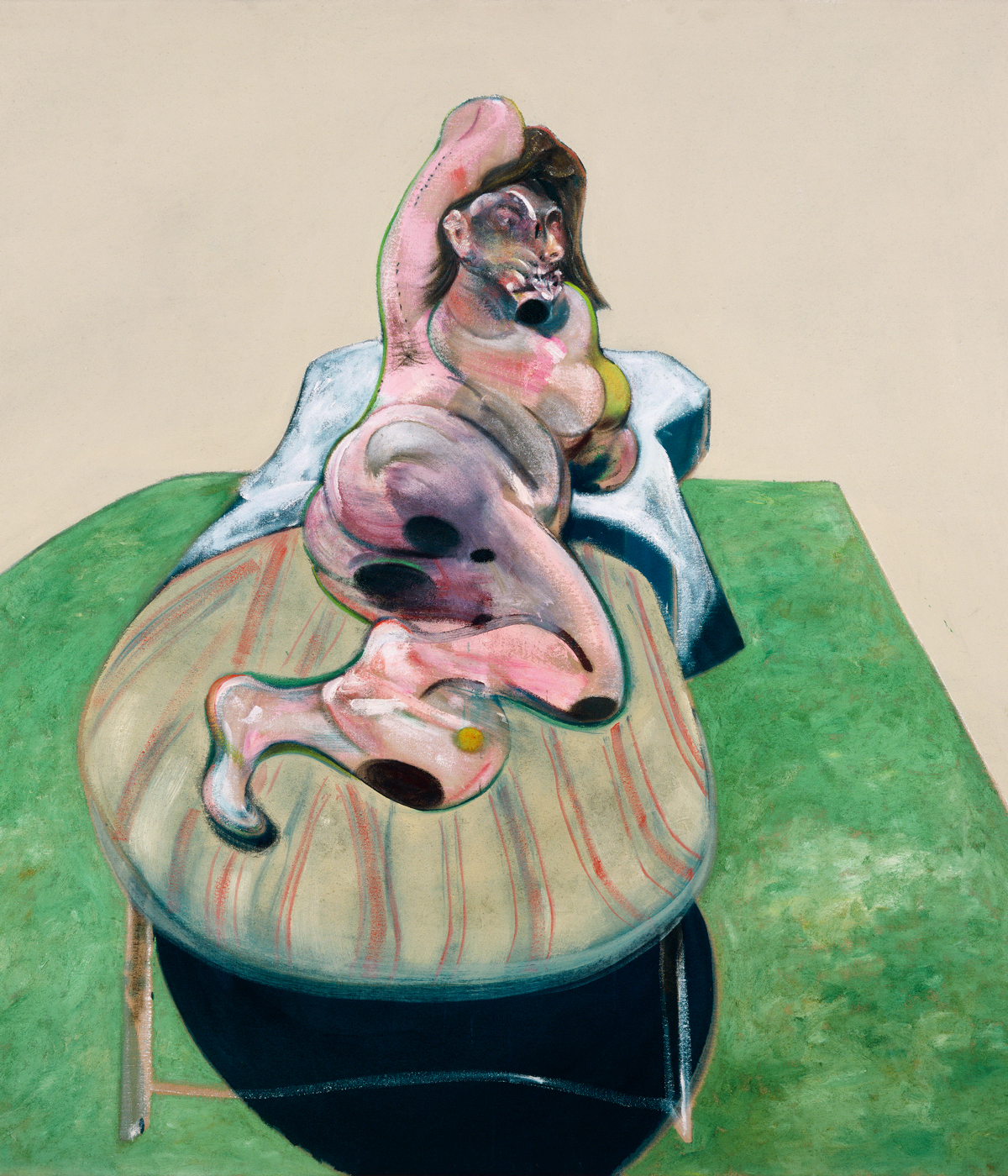
Henrietta Moraes, 1966, by Francis Bacon
Arranged chronically and thematically, the exhibition begins by paying particular care to the provenance of early work. In these screaming, anonymous men, Bacon was reinterpretating classical portraiture in a changed, post-war world. Greatly inspired by Velázquez’s Pope Innocent X (1649−50), Rembrandt’s Self-Portrait with Beret (1659) and Van Gogh’s The Painter on the Road to Tarascon (1888), Bacon began to incorporate colour after his fascination with the last saw a move away from monochrome and into a bruised prism of hues, from rich plums to sickly greens and deep pinks.
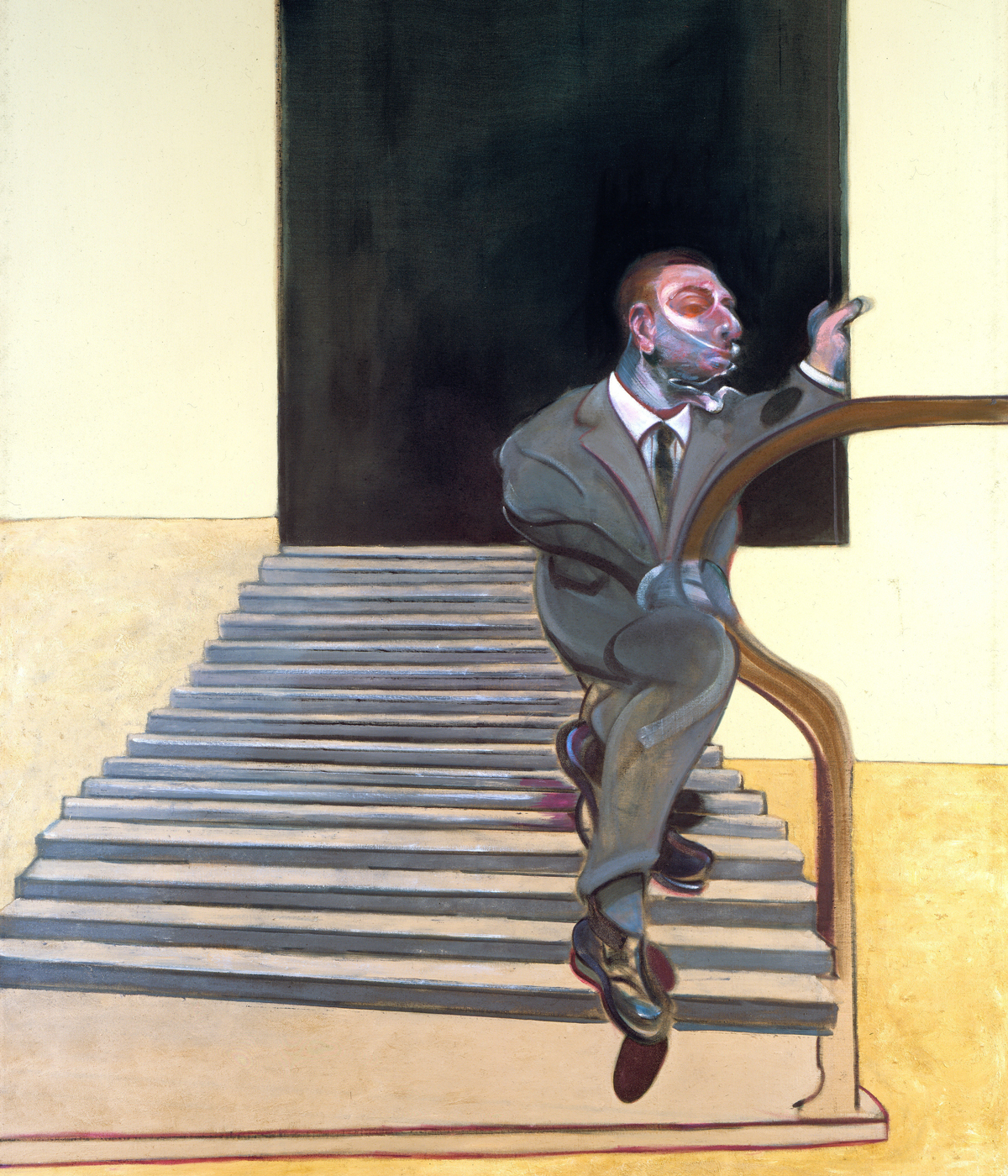
Portrait of a Man Walking Down Steps, 1972, Francis Bacon
Most striking, though, is the depiction of Bacon’s personal relationships, cataclysms which triggered an embrace of new styles and forms. His capturing of his tumultuous long-term relationship with former fighter pilot Peter Lacy is edged with an unsettling tenderness throughout, his naked form a vulnerable foil to the viscerality of the details. Upon his death, Bacon created a triptych of portraits, a format he often returned to when marking friendships or fraught endings. In real time, we watch the relationship disintegrate, the faces becoming more sunken, the image more monstrous, a scream of pain made tangible. When his lover, George Dyer, took his life a decade later, two days before Bacon opened a major Paris exhibition, we see his grief turn inwards. In a 1973 self-portrait, Bacon’s features are lost in a disorientating loop transformed by grief and solitude.

Head VI, 1949, by Francis Bacon
Alongside Bacon, the artist, here is Bacon, the man. He was fascinated by photographs of himself, and we are treated to portraits of him by friends including Cecil Beaton, Bill Brandt and Arnold Newman. In an interview, playing on a loop, he muses on his friends’ negative reaction to their depictions, something he attempted to avoid later in his career by refusing to paint from life, choosing only to paint from photographs or memories of the friends and lovers he knew well. It was no escape, though, from the emotion, despair and sensitivity that continued to mark his work, here traced throughout in heartbreaking, raw detail.
‘Francis Bacon: Human Presence’ is at the National Portrait Gallery, London, until 19 January 2025
Receive our daily digest of inspiration, escapism and design stories from around the world direct to your inbox.
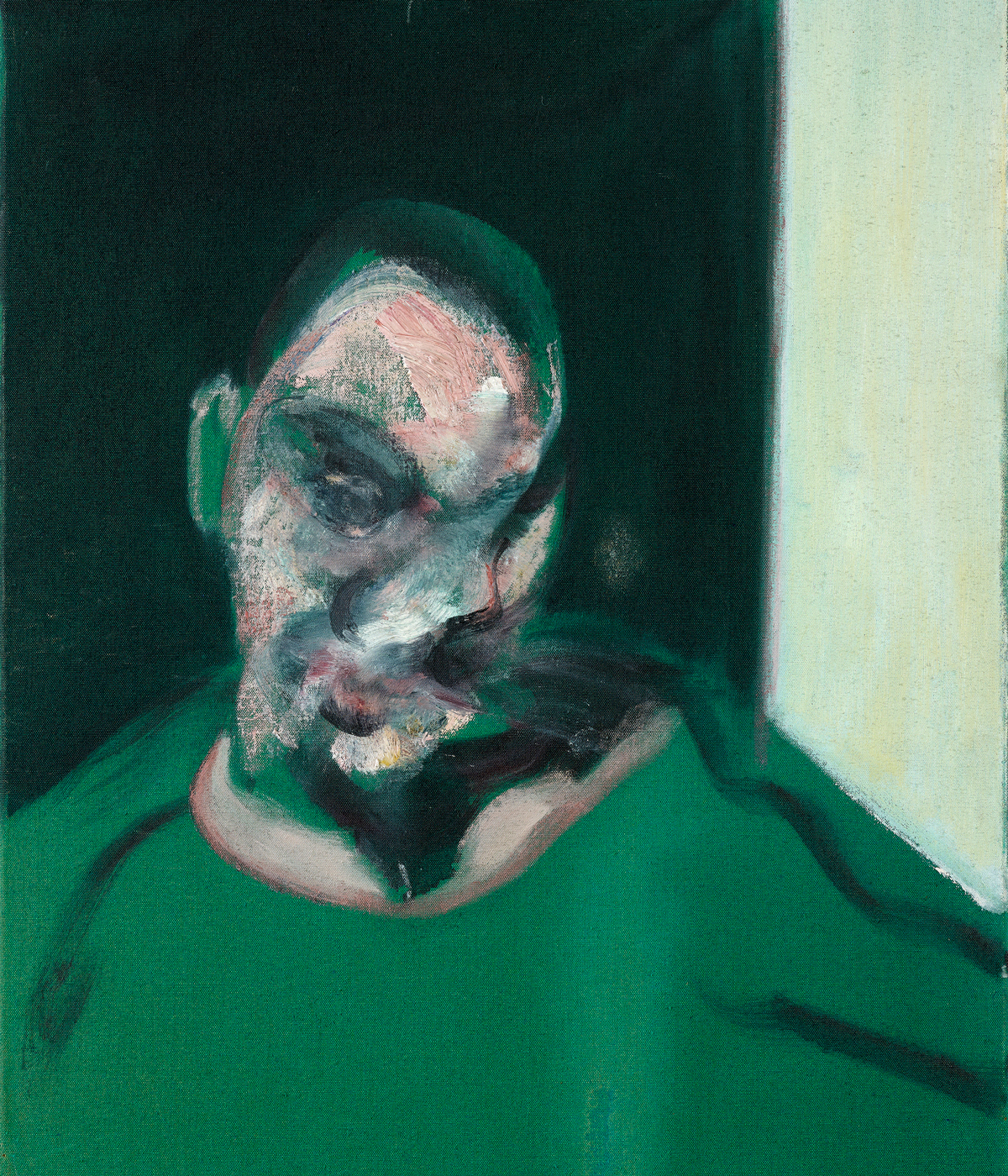
Head of Boy, 1960, by Francis Bacon
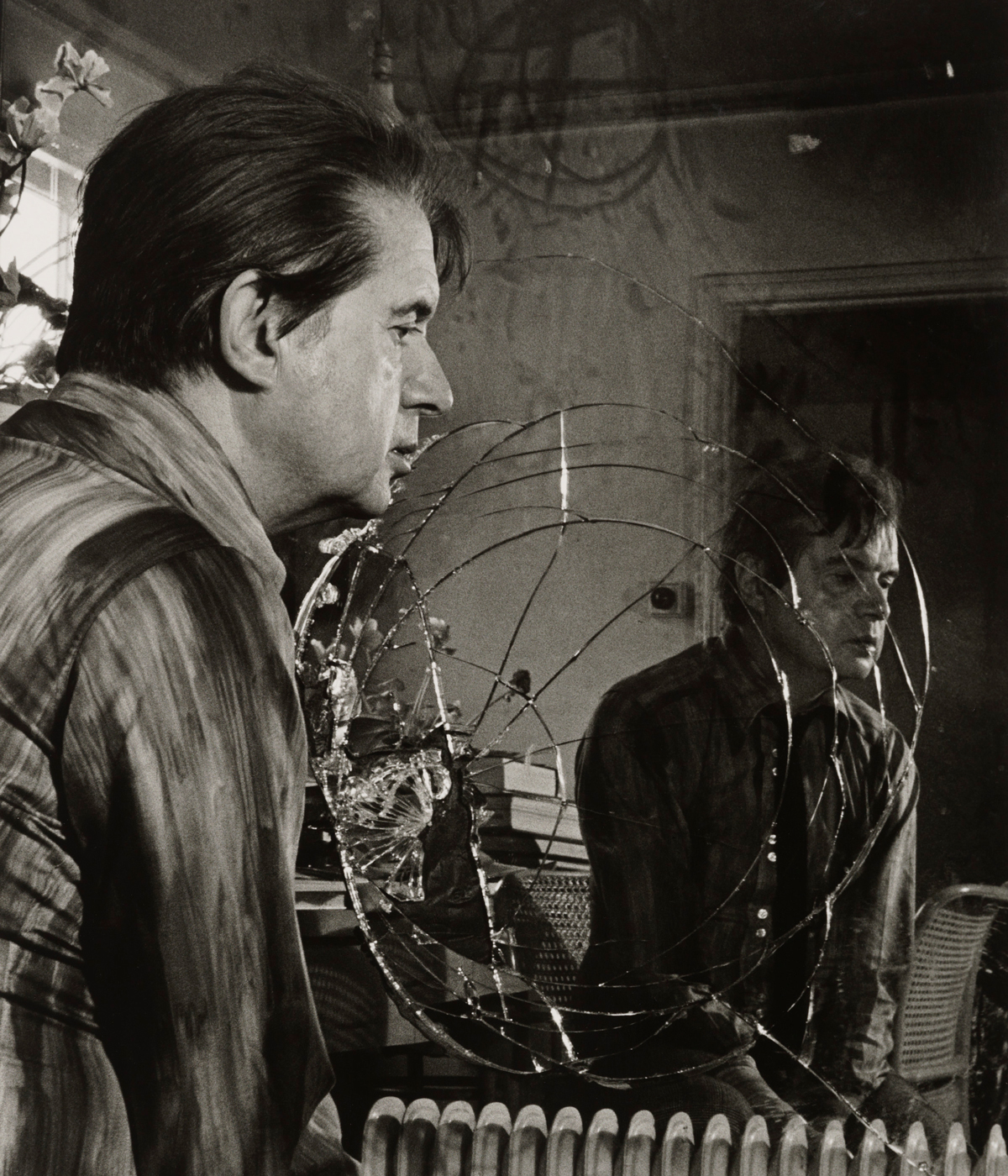
Francis Bacon, 1972, by Mayotte Magnus
Hannah Silver is the Art, Culture, Watches & Jewellery Editor of Wallpaper*. Since joining in 2019, she has overseen offbeat art trends and conducted in-depth profiles, as well as writing and commissioning extensively across the worlds of culture and luxury. She enjoys travelling, visiting artists' studios and viewing exhibitions around the world, and has interviewed artists and designers including Maggi Hambling, William Kentridge, Jonathan Anderson, Chantal Joffe, Lubaina Himid, Tilda Swinton and Mickalene Thomas.
-
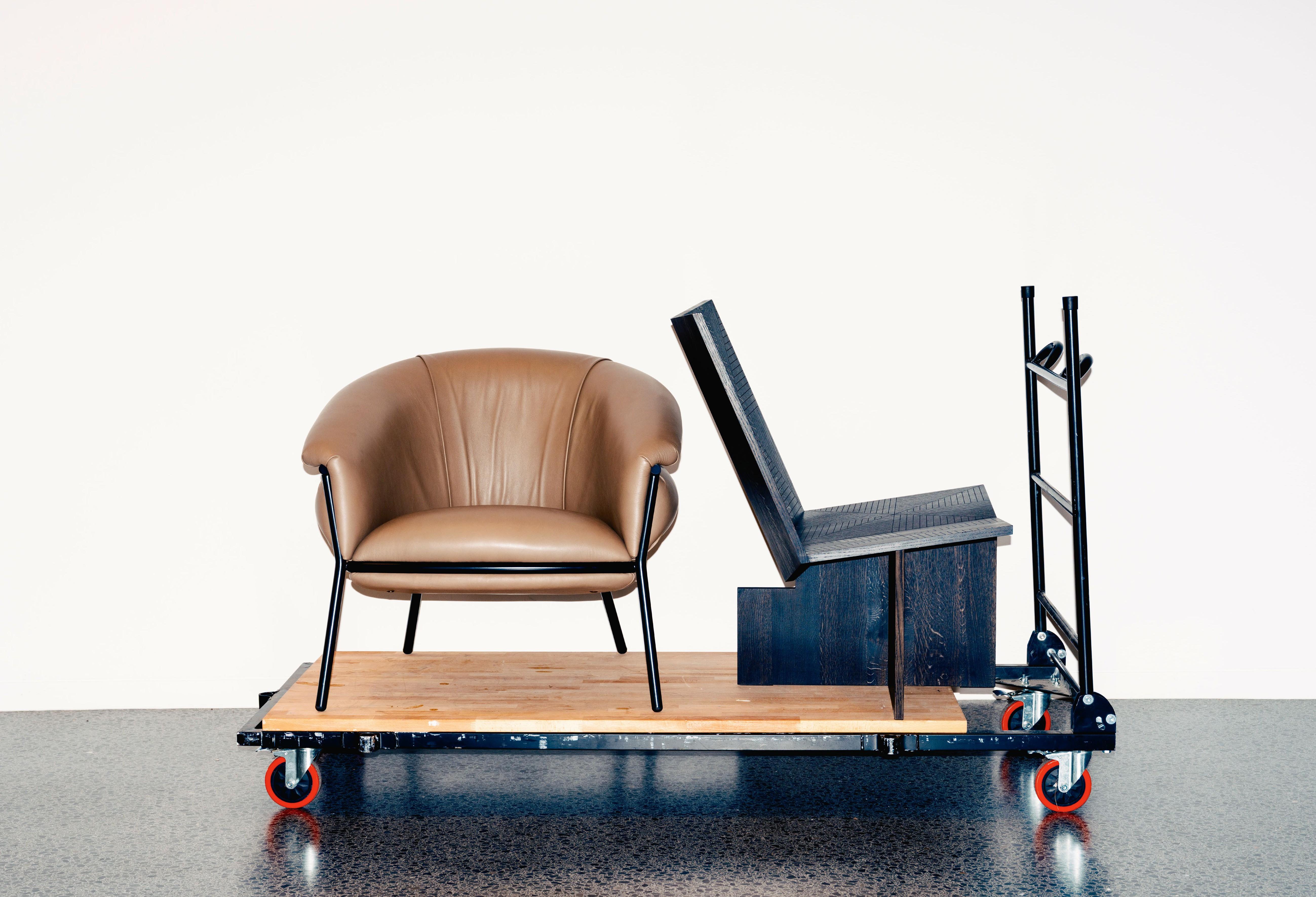 The furniture for the new Studio Museum in Harlem tells a story of its own
The furniture for the new Studio Museum in Harlem tells a story of its ownFurnishings at the new purpose-built home for New York’s Studio Museum in Harlem sit in harmony with its mission as an uplifting platform for artists of African descent
-
 A new show at Edinburgh gallery Bard celebrates the everyday poetry of craft through the optimism of a hardware shop
A new show at Edinburgh gallery Bard celebrates the everyday poetry of craft through the optimism of a hardware shopOpening at Scottish gallery Bard, Bardware celebrates craft with the 'robust joy of a hardware shop'
-
 Kiko Kostadinov’s one-off London runway show was inspired by the designers’ Lakeland terrier, Dante
Kiko Kostadinov’s one-off London runway show was inspired by the designers’ Lakeland terrier, DanteTaking place in the brand’s new east London headquarters on Friday, the co-ed show saw designers Kiko Kostadinov and Laura and Deanna Fanning use the dog’s northern origins to inspire a collection which drew on the British countryside
-
 A former leprosarium with a traumatic past makes a haunting backdrop for Jaime Welsh's photographs
A former leprosarium with a traumatic past makes a haunting backdrop for Jaime Welsh's photographsIn 'Convalescent,' an exhibition at Ginny on Frederick in London, Jaime Welsh is drawn to the shores of Lake Geneva and the troubled history of Villa Karma
-
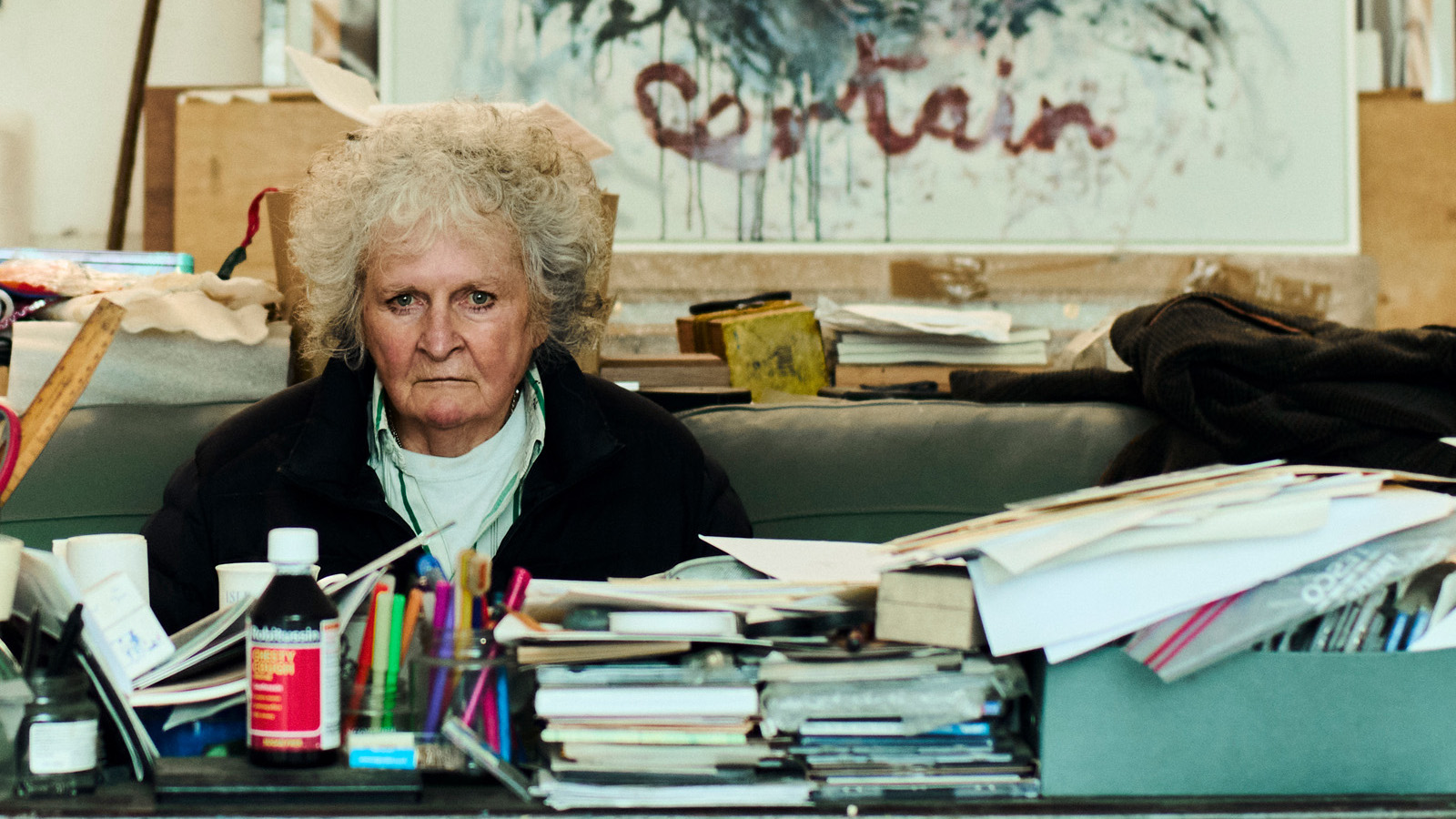 Maggi Hambling at 80: what next?
Maggi Hambling at 80: what next?To mark a significant year, artist Maggi Hambling is unveiling both a joint London exhibition with friend Sarah Lucas and a new Rizzoli monograph. We visit her in the studio
-
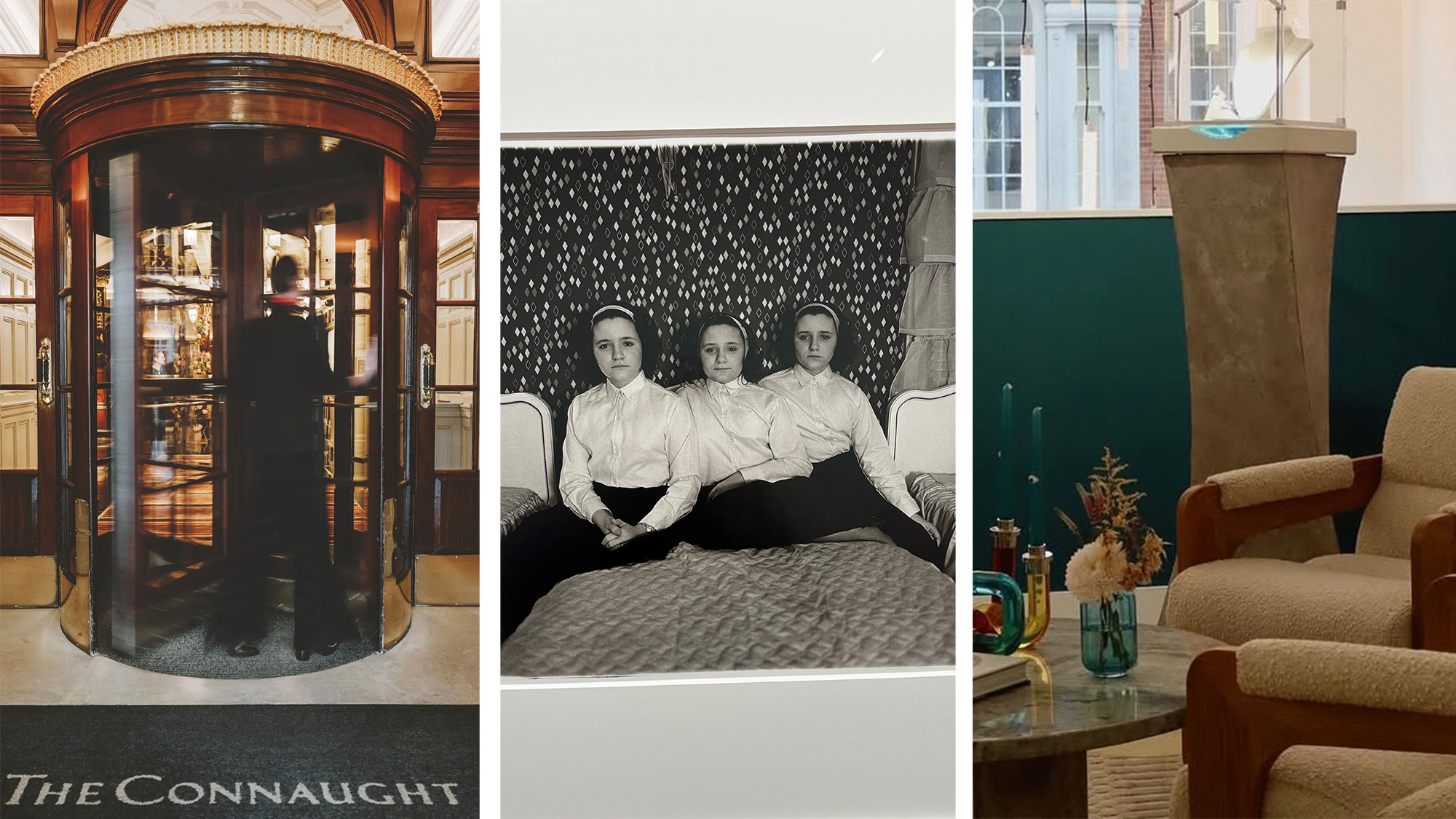 Out of office: The Wallpaper* editors’ picks of the week
Out of office: The Wallpaper* editors’ picks of the weekThis week, the Wallpaper* editors curated a diverse mix of experiences, from meeting diamond entrepreneurs and exploring perfume exhibitions to indulging in the the spectacle of a Middle Eastern Christmas
-
 Artist Shaqúelle Whyte is a master of storytelling at Pippy Houldsworth Gallery
Artist Shaqúelle Whyte is a master of storytelling at Pippy Houldsworth GalleryIn his London exhibition ‘Winter Remembers April’, rising artist Whyte offers a glimpse into his interior world
-
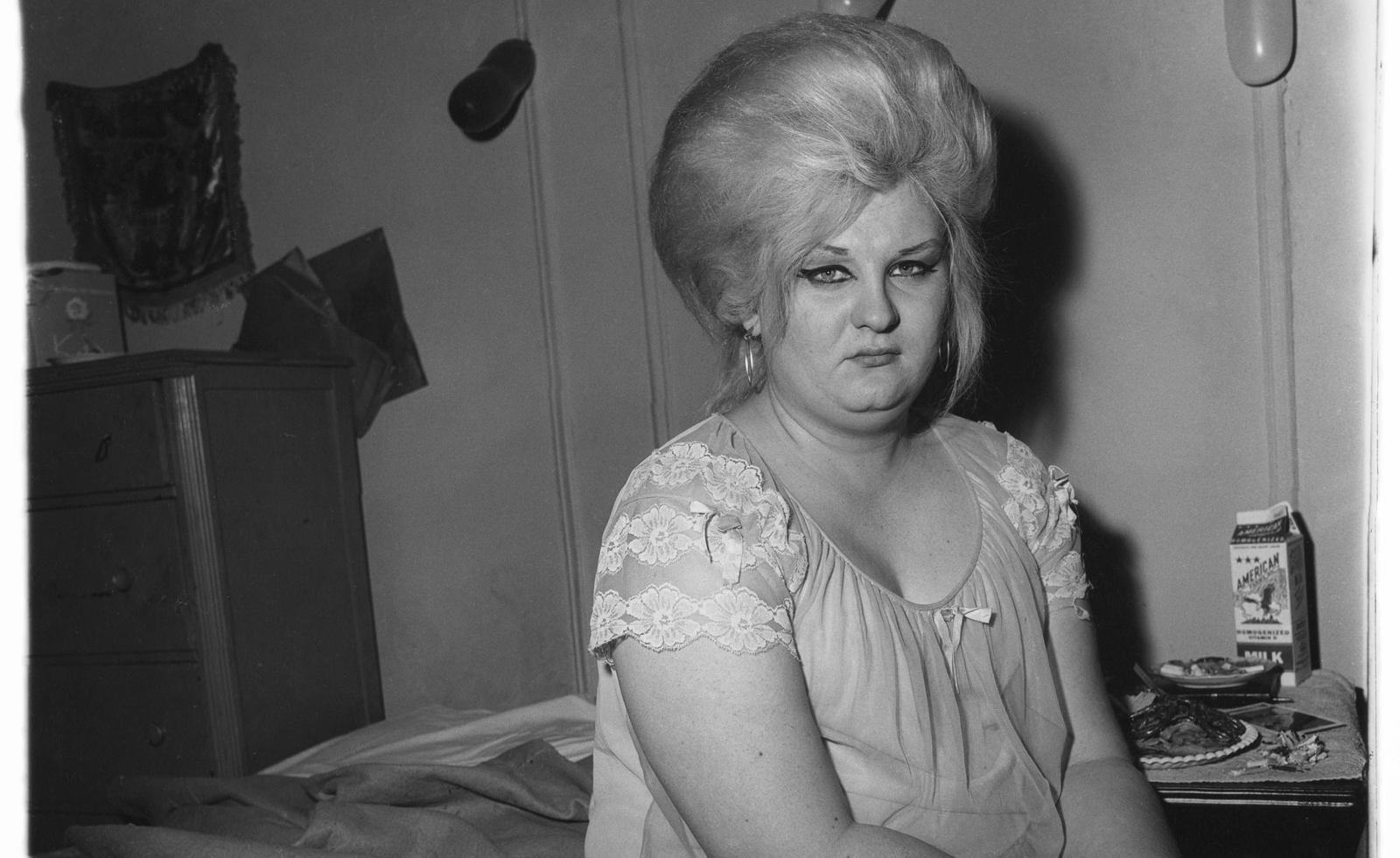 Diane Arbus at David Zwirner is an intimate and poignant tribute to her portraiture
Diane Arbus at David Zwirner is an intimate and poignant tribute to her portraitureIn 'Diane Arbus: Sanctum Sanctorum,' 45 works place Arbus' subjects in their private spaces. Hannah Silver visits the London exhibit.
-
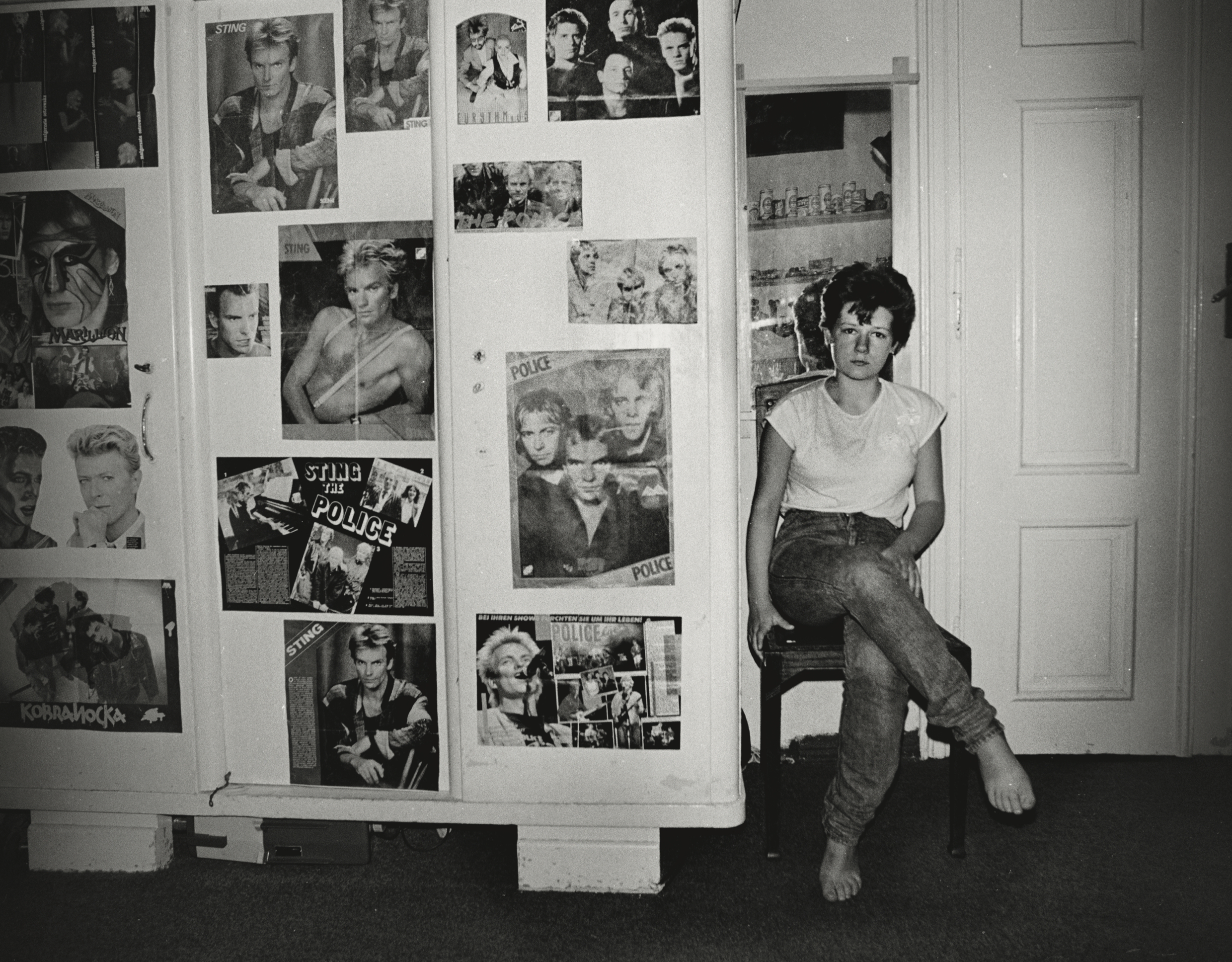 Zofia Rydet's 20-year task of photographing every household in Poland goes on show in London
Zofia Rydet's 20-year task of photographing every household in Poland goes on show in LondonZofia Rydet took 20,000 images over 20 years for the mammoth sociological project
-
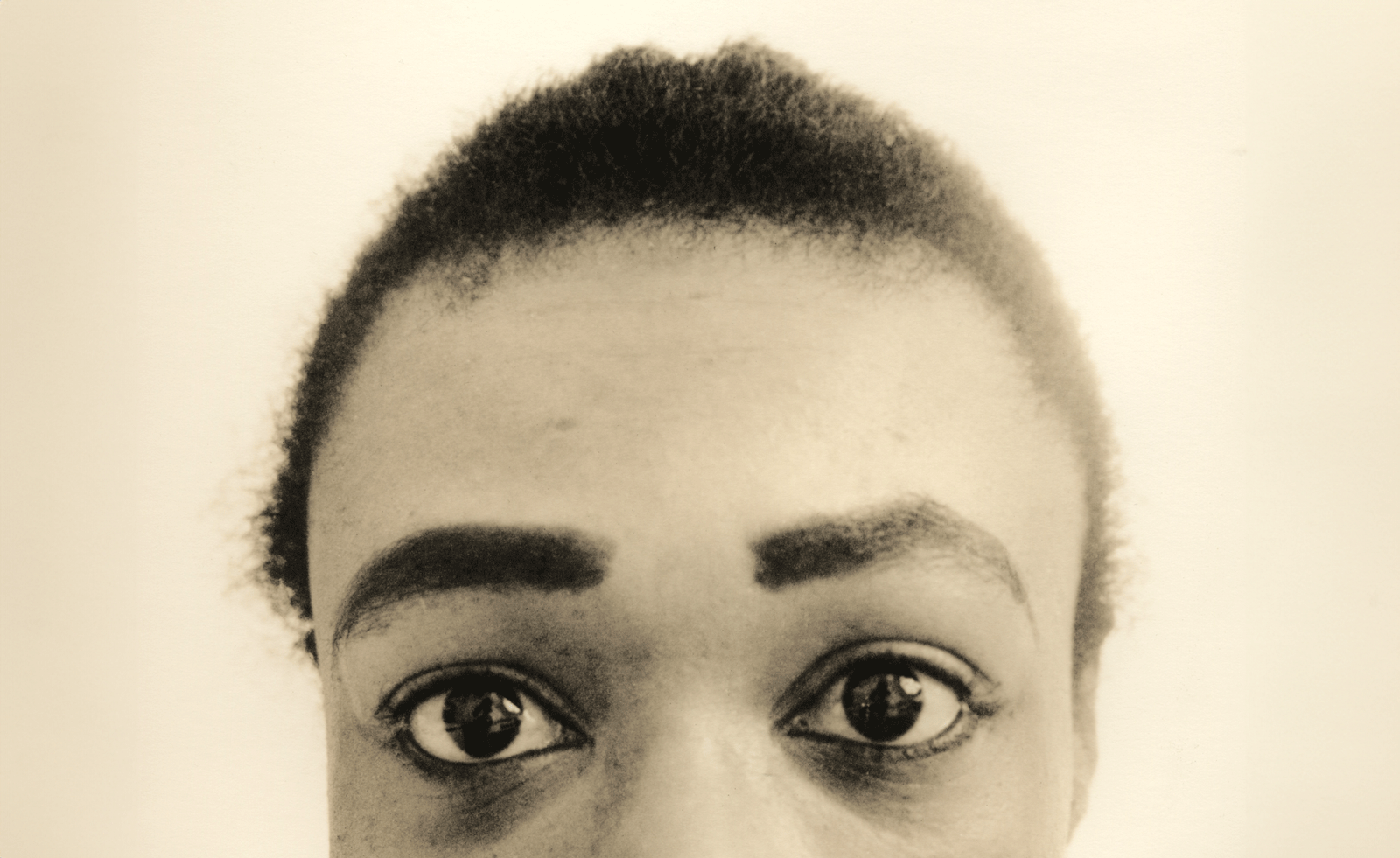 Joy Gregory subverts beauty standards with her new exhibition at Whitechapel Gallery
Joy Gregory subverts beauty standards with her new exhibition at Whitechapel GalleryUnrealistic beauty standards hide ugly realities in 'Joy Gregory: Catching Flies with Honey '
-
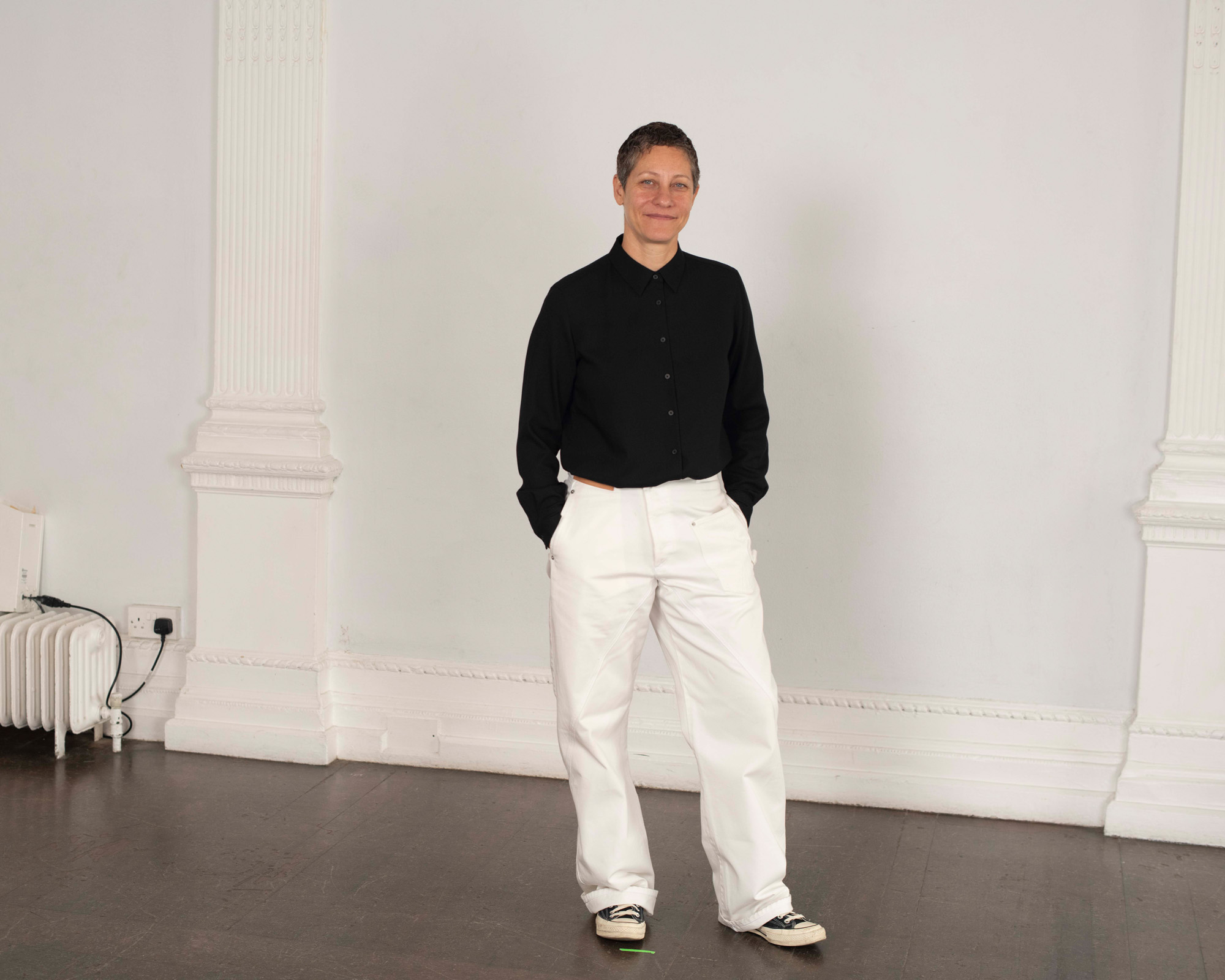 Bengi Ünsal steers London's ICA into an excitingly eclectic direction
Bengi Ünsal steers London's ICA into an excitingly eclectic directionAs director of London’s Institute of Contemporary Arts, Bengi Ünsal is leading the cultural space into a more ambitious, eclectic and interdisciplinary space